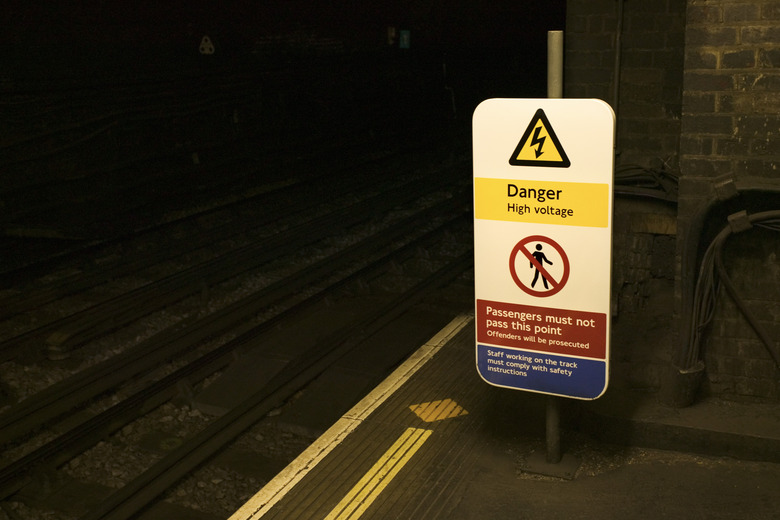What Is Output Voltage?
Electricity comes from a variety of forces that move electrons. Output voltage may be generated and immediately sent through a series of conductors to its final destination. Other forms of output voltage are stored in a chemical form and later released. This type of output voltage provides the energy that powers various commercial and industrial devices.
Voltage Basics
Voltage Basics
Voltage is the difference in charge between two different points. The more the voltage, the greater the flow of electrical current. The current experiences a resistance to its flow; the amount of voltage determines the extent to which the current overcomes this resistance. Voltage is measured by a standard unit called the volt. One volt drives one coulomb, which is the standard unit of an electric charge. The voltage can be direct or alternating: A direct current flows in one direction, while an alternating current often reverses its direction.
Output Voltage Definition
Output Voltage Definition
The output voltage is the voltage released by a device, such as a voltage regulator or a generator. Voltage regulators maintain constant voltage levels. Electricity generators use a fuel source, such as sunlight, coal or nuclear energy, to power spinning turbines, which interact with magnets to generate electricity. A conductor carries the output voltage to various destinations, such as homes and businesses. Semiconductor mediums conduct voltage.
Conductors and Insulators
Conductors and Insulators
Conductors let electric currents flow freely. Insulators surround the electrical wires, not letting currents pass through them. Nonmetallic solids serve as powerful insulators, while copper and aluminum serve as conductors. Electrons in copper are free and repel each other, which means that copper electrons aren't firmly attached to the copper and may detach from the copper. Electrical currents cause a chain reaction that carries the current through the copper.
Batteries
Batteries
Certain devices, such as batteries, store electricity until it's needed by electronic devices. Batteries turn chemical energy into electrical energy. Electrochemical cells are connected through conductive electrolyte anions — atoms that have gained electrons — and cations, or atoms likely to lose electrons. Electrical conductors are connected by an electrolyte — a substance with free ions — made of a solid or liquid substance. Batteries have varying discharge rates based on the number of electrolytes in the battery and the rate at which the device causes the battery to discharge. Faster rates of discharge lead to the battery wasting electricity and operating less efficiently. Output voltage produced by a battery is called electromotive force, or EMF. This term is a misnomer, as it's not actually a force: Instead, it's the energy made available by the mechanism that generates the electricity.
Electrical Phenomenon
Electrical Phenomenon
Various processes may generate output voltage. Magnetic forces exerted on moving conductor charges can create voltage, called motional EMF. Resistors generate voltage, which appears in a circuit, caused by energy dissipation. The amount of output voltage is based on the work the voltage must do per unit charge to move a charge against an electric field between two points.
Cite This Article
MLA
Robert, Chuck. "What Is Output Voltage?" sciencing.com, https://www.sciencing.com/info-10010476-output-voltage/. 7 August 2017.
APA
Robert, Chuck. (2017, August 7). What Is Output Voltage?. sciencing.com. Retrieved from https://www.sciencing.com/info-10010476-output-voltage/
Chicago
Robert, Chuck. What Is Output Voltage? last modified March 24, 2022. https://www.sciencing.com/info-10010476-output-voltage/
